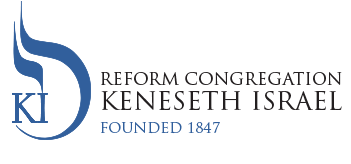
The portion Terumah contains several ideas that are incredibly relevant to us today. This Shabbat we are reading the seventh portion of Sh’mot/Exodus. The dramatic and momentous events of the previous weeks’ Sidrot/portions have now happened. The disparate collection of former slaves have come together as Am Yisrael, the Nation of Israel.
Before beginning their journey to the Promised Land, G-d Almighty has many lessons to teach the people. Last week, we studied in the first group of laws regarding how G-d wants the Israelites to behave both ritually and morally. In Parashat Terumah, Moshe re-ascends Mount Sinai for additional divinely based instruction for him to communicate to the people.
G-d commands Moshe: “Tell the Israelite people to bring Me gifts; you shall accept gifts for Me from every person whose heart so moves him (25:2).” We read a long list of gifts that are acceptable, including precious metals, such as gold, silver, and copper; multi-colored yarns; goat hair; tanned ram skins; acacia wood; oils for lighting and for anointing those who will enter the portable sanctuary; other rare medals and stones.
These diverse materials are to be used to fabricate a breast plate and “ephod,” a sleeveless garment to be worn by the Kohanim/priests. Most of the materials were to be used to construct a portable sanctuary containing the Tablets of the Covenant. This sanctuary was to be assembled, dismantled, stored and carried by the Israelites on their trek through the desert. Every time the Israelites encamped in a new location, the sanctuary was once more reassembled.
The inner chamber of the Mishkan contained the Ark of the Covenant, in which the “Shnei Luchot Habrit,” the Two Tablets of the Covenant, were stored and carried behind an artistically woven Parochet/Ark Curtain. Two engraved statues of winged “Ch’rubim”/angels made of pure gold were mounted on the Aron. The Menorah, the seven branch candelabra stood in the outer courtyard of the Mishkan/Sanctuary.
The portion describes in specific detail the design of the Mishkan. Three walls were fitted together from 48 upright wooden boards, each overlaid with gold and mounted in silver sockets. Across the front was an embroidered screen. The roof was comprised of three layers of tapestry, goat hair, and ram skins.
Inside the enclosure was a table of “acacia wood, two cubits long, one cubit wide, and a cubit and a half high. Overlay with pure gold, and with a gold molding around it.”(25:23,24)
During the Israelites’ travels, the people would bring sacrifices in the Mishkan for atonement or as an expression of gratitude. The Mishkan provided a space for the beginnings of Israelite religious practice. When the Temple was built in Jerusalem by King Solomon, hundreds of years later, these same practices were instituted in that sacred space.
The construction details are incredibly specific. We could almost build a full size model in the KI parking lot!
The commentaries in the Union of Reform Judaism Torah are helpful to us as we read this complicated and detailed portion. We learn that the German theologian Franz Rosensweig understood the significance of the building of the Tabernacle immediately after the Revelation of the Ten Commandments by G-d to Moses. The building of the Tabernacle was “the high point of the Torah: under Egyptian slavery, the Israelites had made buildings for the pharaohs, now they were privileged to expend their labor for G-d’s sake. This more than anything else concretized their freedom.”(page 543)
We learn from the great Reform Biblical scholar Harry Orlinsky that all of these rare materials that the portion prescribes were available to the Israelites. Either they brought these materials with them from Egypt, or found them on the way!
We have much to learn from the opening verses, from which the name of the Sidrah is derived. “Terumah,” is translated in the New Jewish Publication Society version as “Gifts.” This is the lesson for all of us to the present day. Our synagogues, Jewish schools, institutions, Federations, museums, and cultural organizations are totally dependent on our Terumah, our contributions, for their survival. Of course, we define “Gifts” very broadly. Our synagogues dues and fundraising obligations are “Terumah.” But so are the gifts of our time, creativity, and energy to the maintenance of our beloved KI and all the Jewish organizations that are so meaningful for us.
I quoted earlier verse 8: “And let them make me a sanctuary that I may dwell among them.” This Pasuk/sentence has been underlined by Jews for generations. Every synagogue structure, no matter how humble or grandiose, is a fulfillment of this verse. There are congregations familiar to us that place this quotation on the walls of their structures.
It is in our hands to ensure that our KI sanctuary fulfills its divine mandate as stated in the Sidrah of Terumah, as a dwelling place for the Almighty.
Ellen joins me in wishing you and your families a healthy and joyous Shabbat Shalom U’m’vorach!
Hazzan David F. Tilman
